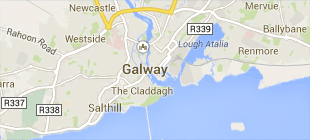-
Cúrsaí

Cúrsaí
Tá roghnú cúrsa léinn ar cheann de na cinntí is tábhachtaí dá ndéanfaidh tú choíche! Féach na cúrsaí atá againn anseo agus an méid a deir mic léinn agus léachtóirí faoi na cúrsaí sin a bhfuil spéis agatsa iontu.
-
Saol na hOllscoile

Saol na hOllscoile
Chuile bhliain roghnaíonn os cionn 4,000 duine Ollscoil na Gaillimhe mar chéad rogha. Faigh amach faoin saol in Ollscoil na Gaillimhe anseo.
-
Eolas Fúinn
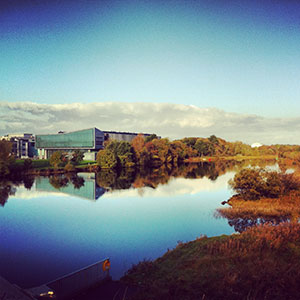
Eolas faoi Ollscoil na Gaillimhe
Bí ar an eolas faoin Ollscoil seo agus na fáthanna a bhfuil sí chomh speisialta sin – an stair thar a bheith spéisiúil a bhaineann leis an Ollscoil agus an nuacht is déanaí agus na hócáidí atá ar na bacáin.
-
Coláistí & Scoileanna
- Scoil na Tíreolaíochta, na Seandálaíochta agus Léann Éireannaigh
- Coláiste an Ghnó, an Bheartais Phoiblí & an Dlí
- Coláiste an Leighis, an Altranais & na nEolaíochtaí Sláinte
- Coláiste na hEolaíochta agus na hInnealtóireachta
- Scoil na dTeangacha, na Litríochtaí agus na gCultúr
- Roinn na Gaeilge
- An tAcadamh
- Stair
- Idirnáisiúnta

Coláistí & Scoileanna
Tá aitheantas idirnáisiúnta bainte amach ag Ollscoil na Gaillimhe mar ollscoil atá á treorú ag an taighde agus rún daingean aici teagasc den chéad scoth a chur ar fáil i réimsí éagsúla saineolais.
-
Taighde

Nithe Fónta á gCruthú as Smaointe Úra
Tugann ár dtaighdeoirí aghaidh ar chuid de na dúshláin is práinní san 21ú Céad.
-
Gnó & Tionscal
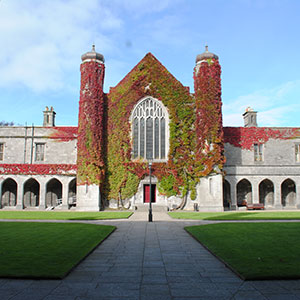
Tacaíocht do Thaighde Úrnua in Ollscoil na Gaillimhe
Déanaimid deiseanna tráchtála a chuardach agus a chothú don phobal taighde in Ollscoil na Gaillimhe, mar aon le comhpháirtíocht tionsclaíochta a chothú.
-
Alumni, Cairde & Lucht Tacaíochta
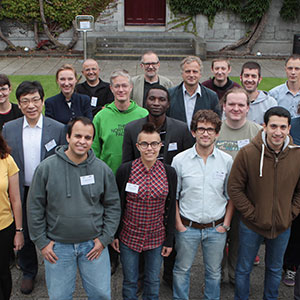
Alumni, Cairde & Lucht Tacaíochta
Tá os cionn 90,000 céimí de chuid Ollscoil na Gaillimhe ann ar fud an domhain. Déan nasc linn agus beidh teacht agat ar an gcomhphobal sin ar líne.
-
Rannpháirtíocht Pobail
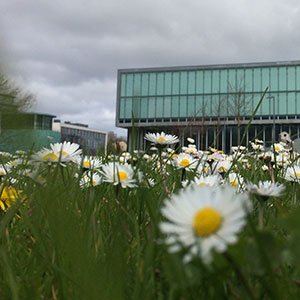
Rannpháirtíocht sa Phobal
In Ollscoil na Gaillimhe, creidimid go n-éireoidh níos fearr leat más féidir leat an méid a fhoghlaimíonn tú a chur i bhfeidhm i do shaol féin. Is mar gheall air sin go bhfuil béim mhór ar shocrúcháin oibre nó ar thionscadail phobail i gcuid mhór dár gcúrsaí.
Nuacht
Researchers unlock secrets of spinal disc degeneration
New research into the arrangement of sugar chains or ‘glycans’ in the cells of the spine has shed light for the first time on the critical role it plays in the complex process of disc degeneration. Researchers at CÚRAM - Research Ireland Centre for Medical Devices at University of Galway, together with a team of international colleagues, carried out a comprehensive investigation into the different characteristics of glycans in healthy and degenerated intervertebral discs. It is the first time that the whole human disc glycome in the spine - the entire set of sugar chains that modify human proteins and lipids - have been analysed in this way. Intervertebral disc (IVD) degeneration is a major cause of low back pain, a significant global health issue. While glycosylation is critical for cellular signalling and inflammation, its malfunction can lead to diseases and its role in IVD degeneration has remained poorly understood until the research was conducted. Dr Kieran Joyce, first author of the paper, said: “From this research, we now know which sugars are expressed in the degenerated or diseased disc states, so we can design therapies to target this. “We observed distinct alterations in glycan expression, notably an overabundance of sialic acid on the surface of the cells in degenerated discs and decreased branching, which are associated with IVD degeneration. These observed differences have implications for regulating inflammatory responses and other cellular activities.” Professor Abhay Pandit, Scientific Director of CÚRAM and senior author of the research paper, said: “Our findings suggest that there is therapeutic potential in using biomaterial systems to intervene and alter the way proteins and glycans attach to each other to reduce inflammation associated with IVD degeneration. This research significantly advances our knowledge of the glycomic mechanisms underlying IVD degeneration and opens new avenues for developing therapies to restore disc physiology.” The finding of the research have been published in Advanced Science and can be accessed at https://advanced.onlinelibrary.wiley.com/doi/10.1002/advs.202506669?af=R. The project was carried out by CÚRAM researchers at University of Galway in collaboration with colleagues at Maynooth University, University College Dublin, the National Institute for Bioprocessing Research and Training (NIBRT), the Medical University of South Carolina and the Institute of Chemical Technologies and Analytics in Austria. Ends
University’s Institute for Clinical Trials wins 2025 Collaboration in Medtech Award
Na chéad trialacha ar domhan do leigheas nua ar phian ainsealach á gcur i gcrích in Éirinn
World-first trials for chronic pain pioneered in Ireland
Friday, 16 December 2022
All eligible University of Galway full time and part time hourly payscales have been updated in line with the provisions of Building Momentum - A New Public Service Agreement 2021-22. Specifically the following increases have been implemented: - With effect from 02nd February 2022, payscales received a 3% increase - With effect from 01st October 2022- payscales received a further 1% increase or €500, whichever is greater We are still awaiting sanction for the implementation of FEMPI restoration wef 1st July 2022 (save for a limited number of pay scales). Therefore there are no changes to those grades\pensions for now. See paragraph 1.3 in the above link for more details. Further advice will be issued for these grades in due course.
Monday, 24 April 2023
We have been asked to bring to your attention the fact that Secondment Expression of Interest Notices has been issued for the Public Service Transformation Division of the Department of Public Expenditure, NDP Delivery and Reform. Expressions of interest are invited from across all sectors of the Public Service, including higher education, and across a number of grades. Notices are available directly at the following link, and DPENDR and DFHERIS would very much appreciate your support in circulating to your staff. The closing date for applications is 2nd May, and we understand the notices issued on Friday 14th April.









